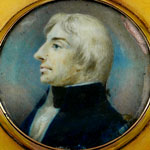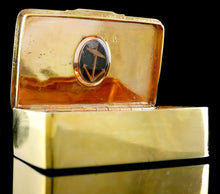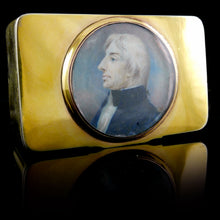Admiral Lord Nelson Silver Gilt Snuff Box, Circa 1810
Adding product to your cart
7.5cm (3in) x 5cm (2in) x 2.25cm (0.9in)
A Regency silver-gilt snuff box, the lid inset with a watercolour profile portrait of Admiral Lord Nelson after Simon de Koster, with gilded interior, the inside of the lid further set with a oval glazed compartment containing a carved wood anchor set upon a fragment of navy blue close weave cloth. Maker’s mark of ‘J.D.‘, possibly for James Douglas of Dundee, and town marks for Edinburgh.
Read more
The present snuff box can be seen as very personal momento of a, possibly Scottish, sea officer’s career under Nelson’s command. The carefully worked anchor on what may well be a piece of uniform cloth no doubt held special significance for the original owner. The choice of portrait from the myriad of available images both before and especially after Trafalgar is equally telling. De Koster’s original portrait of Lord Nelson was executed at Merton in 1800, a few days before Nelson left for Denmark and the Battle of Copenhagen. It was considered both by Nelson and his immediate circle to be a true and favourite likeness. The original, contained in a locket, was given to Emma Hamilton, but it was also produced as a small line vignette engraving by James Stow that was published in 1801 by J. Brydon at 7 Charing Cross. Interestingly Nelson himself said of De Koster’s image ‘There are so many prints of me that it is not in my power to say which is the most like the original, for no one of them is like the other but I rather think a little outline of the head sold at Brydon’s Charing X is the most like me.’
Silversmith James Douglas (fl.1795-1820) served his apprenticeship in Edinburgh, and returned to Dundee between 1795 and 1800. He was Assay Master at the Edinburgh Assay Office from 1808 to 1810.








